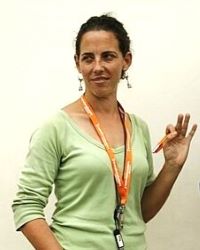Deaf in Cameroon

Photo Source:
Kate Nelson/AusAID - Wikimedia
Creative Commons
|
Send Joshua Project a map of this people group.
|
| People Name: | Deaf |
| Country: | Cameroon |
| 10/40 Window: | No |
| Population: | 258,000 |
| World Population: | 27,508,450 |
| Primary Language: | Language unknown |
| Primary Religion: | Unknown |
| Christian Adherents: | 0.00 % |
| Evangelicals: | 0.00 % |
| Scripture: | Unspecified |
| Ministry Resources: | No |
| Jesus Film: | No |
| Audio Recordings: | No |
| People Cluster: | Deaf |
| Affinity Bloc: | Deaf |
| Progress Level: |
|
Introduction / History
Deaf people are among every ethnic group and every country of the world. Deaf people are usually classified by country only, example: "Indian Sign Language." However, to reach the deaf among peoples who have no Bible translation or sign language, it is possible that some adaptation (if not an entirely new sign language) will need to be developed in order to reach them. If you think about this, every language (and many ethnic people speaking the same language) will need their own missionaries to deaf people. In Cameroon, they use the Maroua Sign Language. Few non-Deaf understand it.
What Are Their Lives Like?
The Deaf child is left to try to visually determine his/her worldview. Many say they learn the "rules of life" by watching the action on TV or in movies. Hearing Sunday School teachers and pastors are not able to communicate truth or their beliefs to Deaf children.
Everywhere, people who are Deaf are mistaken for lacking intelligence. They don t learn or respond like other people, and they often can t talk.
What Are Their Beliefs?
About half of Cameroon is Christian. However, those who are Deaf need the gospel to come to them in a special way. They have different communication needs.
What Are Their Needs?
This is an outcry for all the deaf people, not only in Cameroon, but in the entire world. They have special needs and barriers to the gospel because they cannot communicate in the same way as other people.
Prayer Points
Pray for the Lord to get ahold of the hearts of Deaf people in Cameroon and use them to disciple other Deaf people.
Pray for the Holy Spirit to find a way around the communication challenges for the Deaf in Cameroon.
Pray for the Deaf in Cameroon to have dreams and visions of Christ, leading them to the cross.